First, let’s get it straight. It’s spelled BOTH ways. Piedmont is how most English speakers say it; Piemonte is how the Italians pronounce it. And me. I like to say Piemonte! with an upward lilt (and an exclamation point) at the end because it makes me feel authentic and perhaps like I might live there one day. But for the benefit of clarity, I will refer to it as Piedmont here.
So let’s talk about why, if you’re a wine traveler like me, Piedmont should be on the top of your “must visit” list. The number one thing I always hope for in a wine country is the hardest thing to find. I want my lodging to be located in the vineyards, staying in a room overlooking grapevines as far as the eye can see. But ideally, I also want it to be somehow in a town where I can wander around in the evenings, from wine bar to adorable farm-to-table restaurant without need of a car.
Most wine countries are vast farmland and have either accommodations with a view and only one restaurant (unless you want to drive), or a central town with several dining and lodging options but no view.
But not Piedmont. Oh no. Piedmont is a patchwork of vineyards that curve over undulating hills, each culminating in a town like cherries atop a gelato sundae. Views of this terroir, often from a hotel balcony or restaurant, are straight out of Wine Spectator magazine. But the appeal of Piedmont is not only vineyard views and cobblestone towns filled with a local cuisine that will make you want to wear increasingly larger sizes of stretchy pants…
Allow me to illustrate 10 ways that Piedmont, Italy is my new favorite wine country:
1) The Wine

I lost count of how many lovely wines I tried in Piedmont, but I know I took 12 bottles home. Photo credit: Robert Alexander
Sure, simply bottling nearby juice and having it available with a bread bowl full of cheese will satisfy some folks, but Piedmont’s wine doesn’t just ‘do the trick,’ it’s GREAT. Once in the shadows of the Super Tuscan, the Langhe’s wines now ping the radars of wine lovers the world over. Originally owed to the mastery of Angelo Gaja, a wine producer credited with “revolutionizing winemaking in Italy,” up-and-coming winemakers are now creating some noteworthy expressions of this grape and being there puts one in the position of trying wines you would otherwise not get to try.
What kind of wine is it? The predominant grape is Nebbiolo, a red varietal known most famously for tasting of “tar and roses,” which is fantastic if you enjoy the taste of either tar, or roses. (I enjoy the taste of bandaids and smoke, but that’s a different story.) Nebbiolo also has a reputation for having earthy flavors like moss, truffles, smoke, violets, and cherries. It’s best aged since the acidic structure and tannins are grippy and need time to mellow in the bottle.
Note: To clear up a little confusion when reading a wine menu, all Barolos and Barbarescos are Nebbiolo, but not all Nebbiolos are Barolo and Barbaresco. Barolo and Barbaresco are wine producing areas within the Langhe region and by law must produce red wine that is 100% Nebbiolo. However, in this region there are many other wonderful producers making some nice Barberas, Dolcettos and Nebbiolos. Just like the frequently compared to French Burgundy, these wines are outstanding when paired with food from this region. Which brings me to:
2) Food in This Region
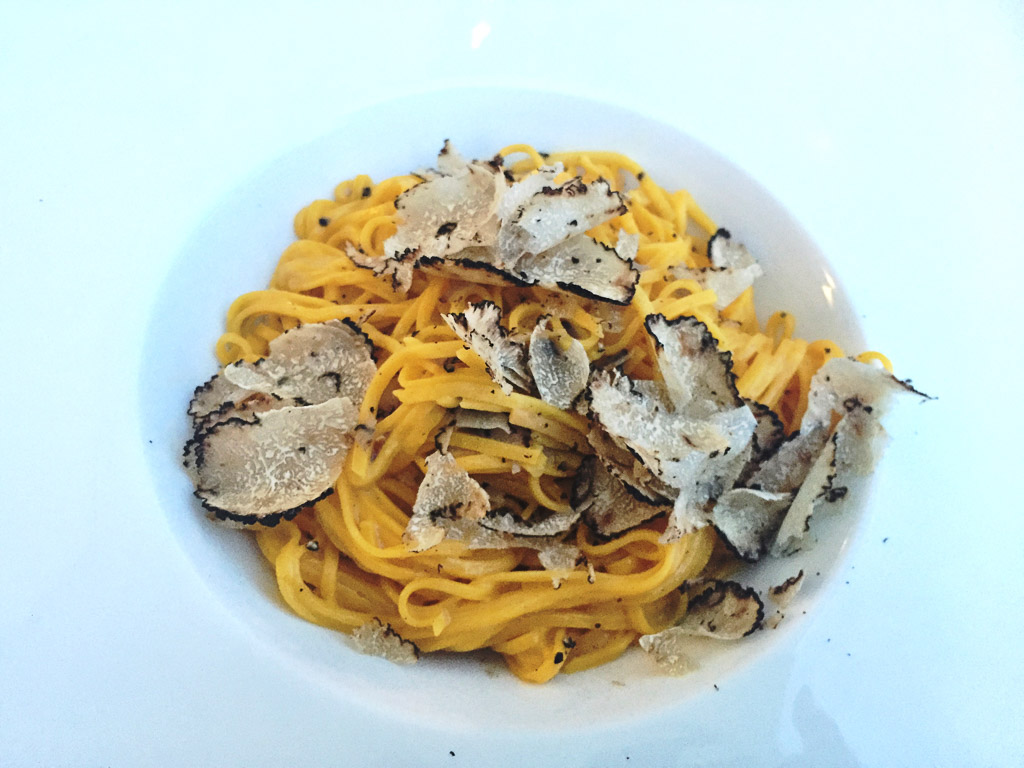
Tajarin, a regional dish of Piedmont. It’s a thin ribbon-like pasta all hopped up on egg yolks and it’s so good that I ate it two nights in a row with no shame whatsoever.
My friend Robert of Travel Langhe threatens to write a book one day about the fact that there is not really a universal cuisine in Italy. Traveling from region to region you begin to realize that he’s right, there is no one style that permeates all kitchens in Italy. Traditional Piedmont dishes tend to have the central ingredient of eggs, deep orang-y-yolked, farmhouse fresh eggs. One of the specialties of this region is called tajarin, and it traditionally requires 30 egg yolks per one kilo of flour. The resulting pasta is then cut into thin ribbons and is so rich and flavorful it needs only to be folded with salty warm butter to create an incredibly satisfying meal.
Only thing that can up this game is the one thing that the this area is known the world over for and that’s…
3) TRUFFLES!
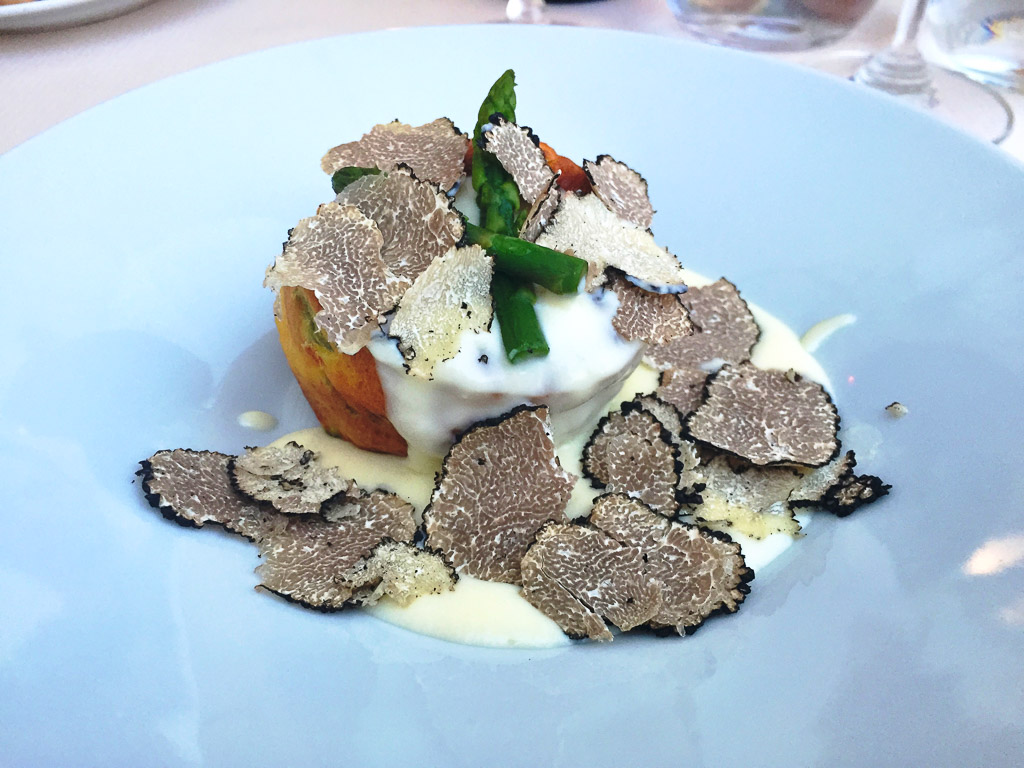
There is a gorgeous asparagus flan under that blanket of mushroom shavings from heaven, but do I care? I just want to say, truffles, if you’re reading this…call me.
…
Sorry, I had to take a moment there and collect myself after thinking about truffles.
There are few things in the culinary world that make me as crazy as truffles. They’re like the George Clooney of the fungus world. Black truffles and white truffles are numbers 1-5 on my “freebie five” list, and a visit to Piedmont is a visit to the heart of this gourmet mushroom’s universe.
Because truffles are famously found in Piedmont, the fabulous thing about eating here is that in many restaurants you can get them added to almost any meal, or even experience entire tasting menus with each course (including dessert) smothered in the heavenly, earthy, paper-thin shavings, for relatively reasonable rates. The village of Alba even has a yearly festival celebrating this rarest of mushrooms.
4) Hilltop Towns
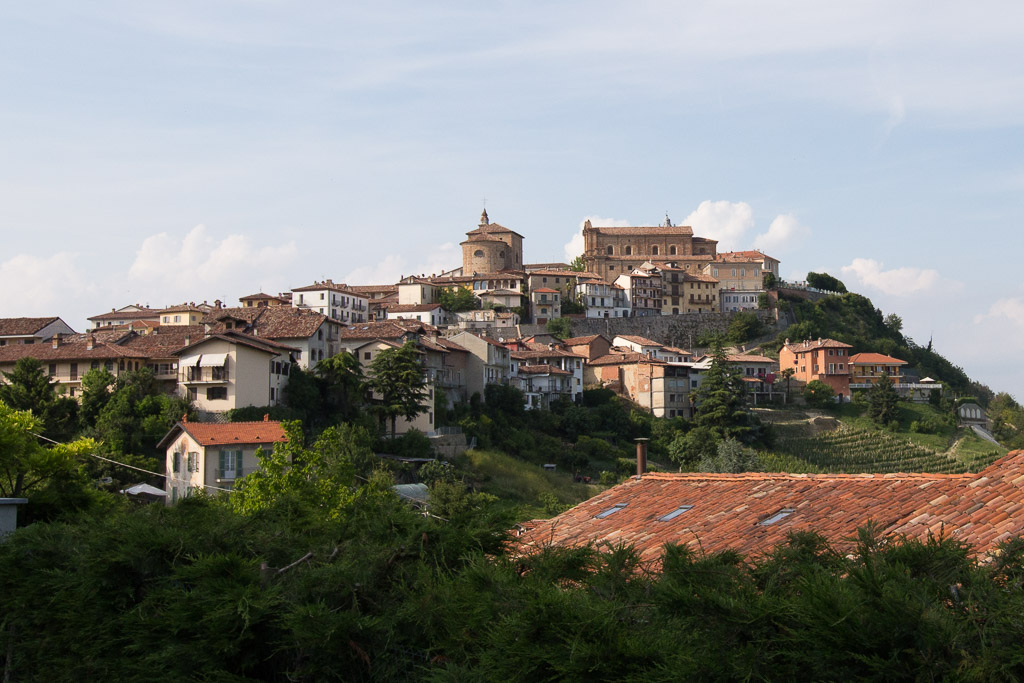
They’re, like, on every hilltop! These towns in Piedmont are as fun as they are enchanting, packed with great restaurants and views for miles.
Speaking of Alba, this brings me to what makes the region so grand for visitors. Alba, amongst some of the other hilltop towns make for lovely, impossibly romantic perches with windows onto the region’s hilly vineyards. Cobblestone streets, wine bars and enotecas, delicious restaurants, dreamy views, and little boutiques and shops are all yours when you stay in one of Piedmont’s many towns. Try Serralunga, La Morra, Barolo and Neive.
5) This Church
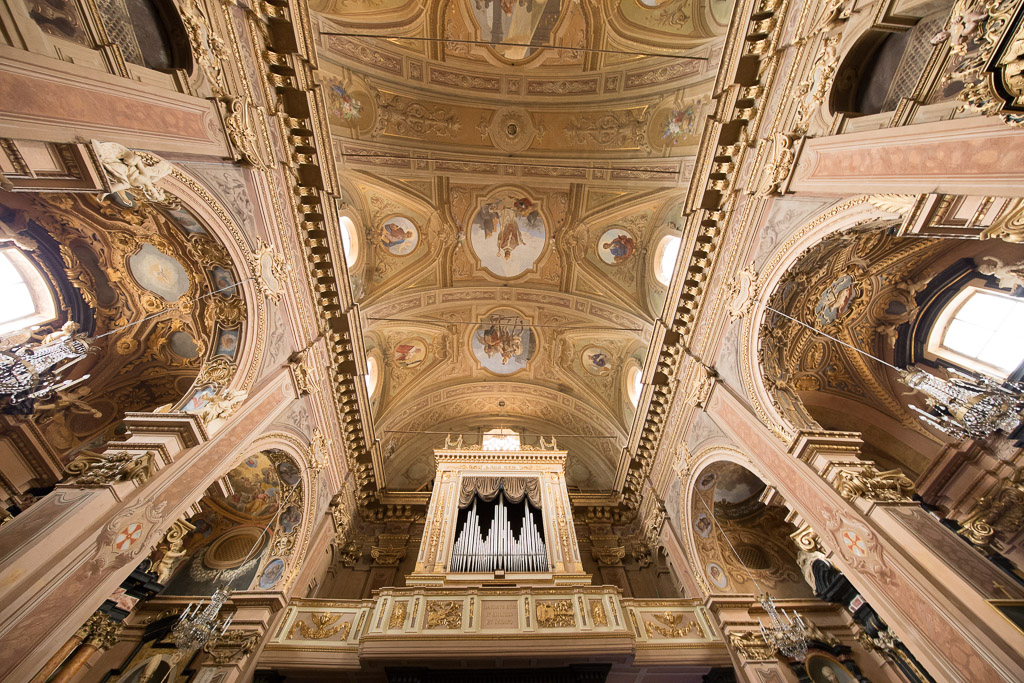
Architecture in Piedmont can be stunning. Make sure you visit this cathedral in La Morra and give thanks for all of the wine.
What’s so wonderful about these little towns is that each one is a historical settlement unto itself. Staying in any of them provide lovely evenings of discovery as you shop in a small gourmet shop, have a meal at an outdoor café or poke your head in at this stunner of a cathedral in La Morra.
6) The View
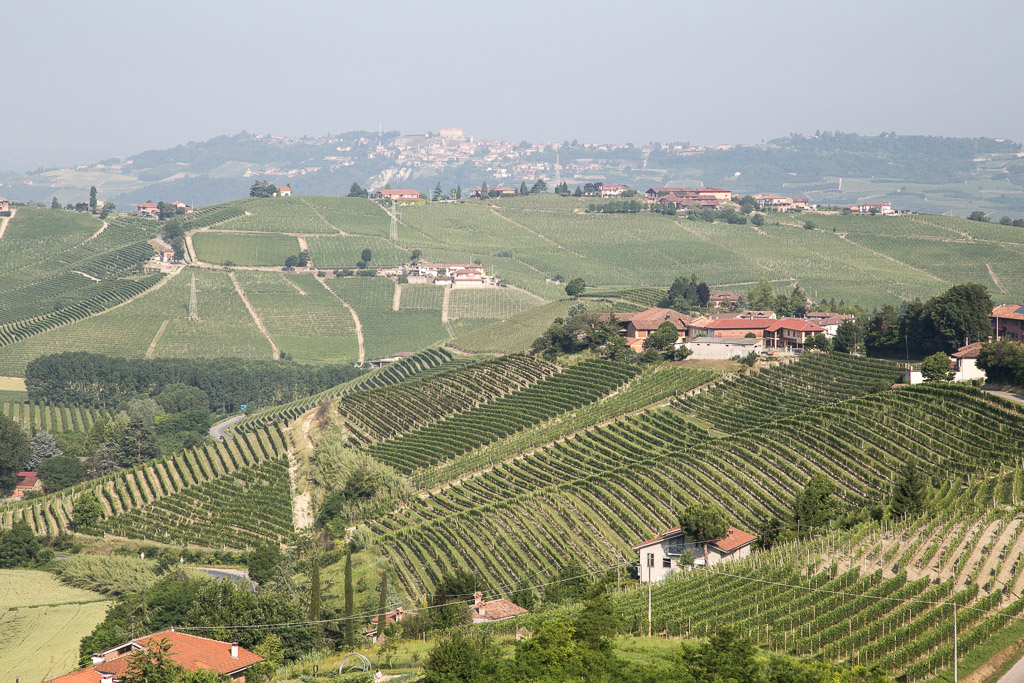
The view of Piedmont’s wine country from our hotel in Neive.
From any of these gorgeous little towns you have stunning views like this. Many of the small guesthouses, B&Bs and hotels offer rooms with either a balcony or terrace and these views come standard.
7) The Situation
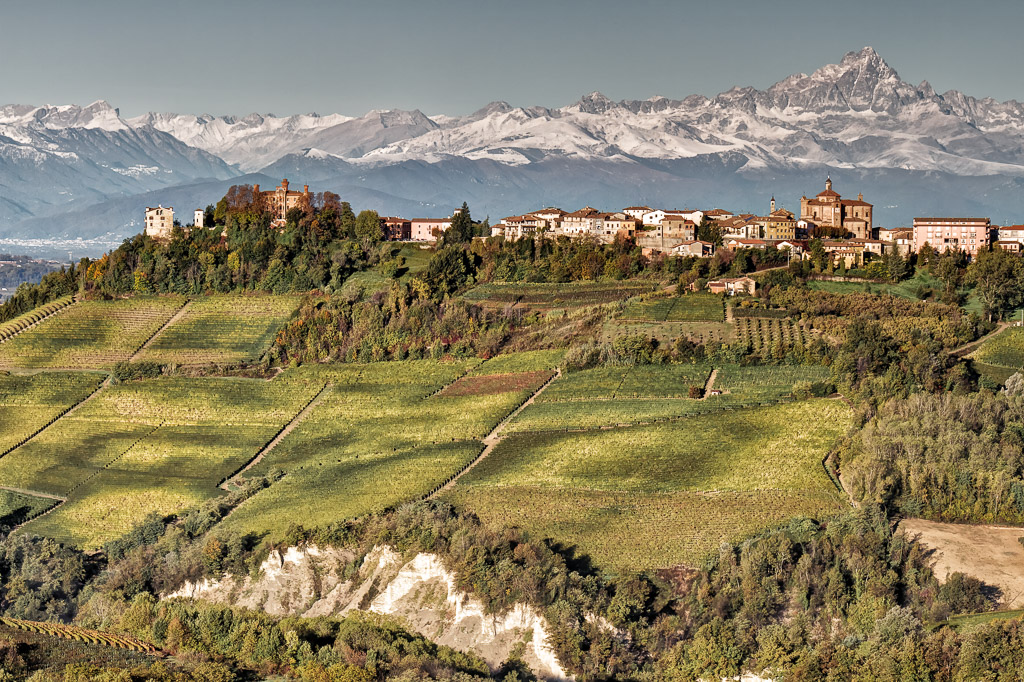
The Alps surround three-fourth’s of Piedmont’s borders. Breathtaking, right? Photo credit: Robert Alexander
Piedmont is bordered on three sides by the Alps, which provide stunning views of vineyards with the mountains rising above. It makes you feel expansive and protected all at once.
8) The Vineyards
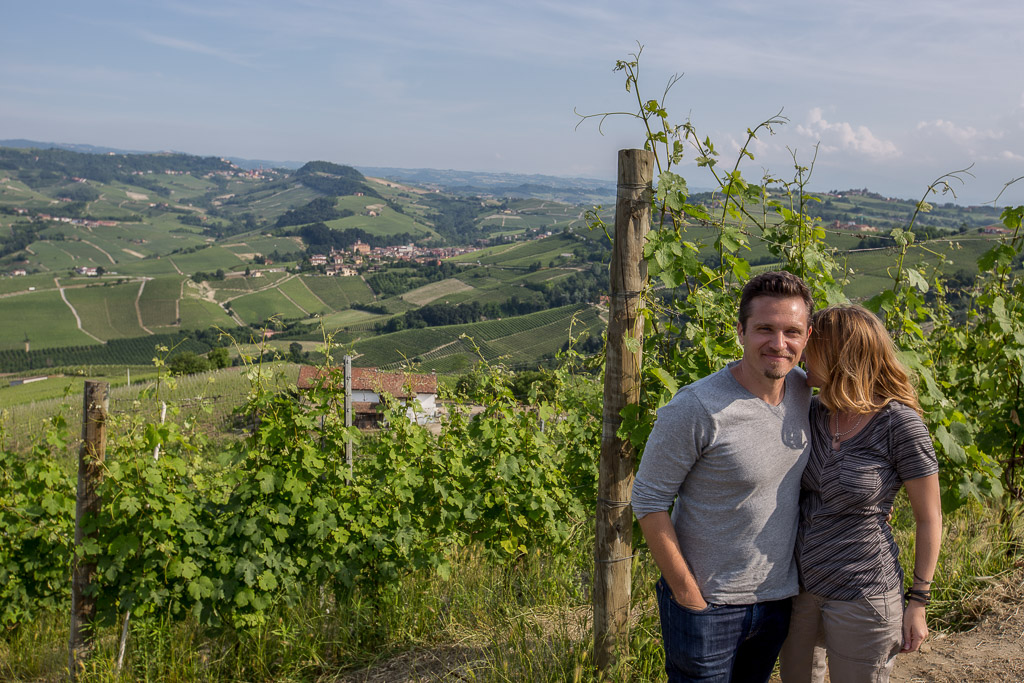
Sometimes I have to check and make sure they’re still there. Seamus and I standing in the vineyards of Piedmont. Photo credit: Robert Alexander
For any wine traveler, there is something about those vines. Both sinewy and strong, with broad leaves reaching out and over to shelter clusters of green and purple berries hanging from them like a queen dripping in jewels, vineyards inspire and soothe the wine drinker. Maybe it’s just knowing that even though you’ve been drinking your way through Piedmont, more is on the way. It’s a comforting thought. *sip*
9) Wine Tours
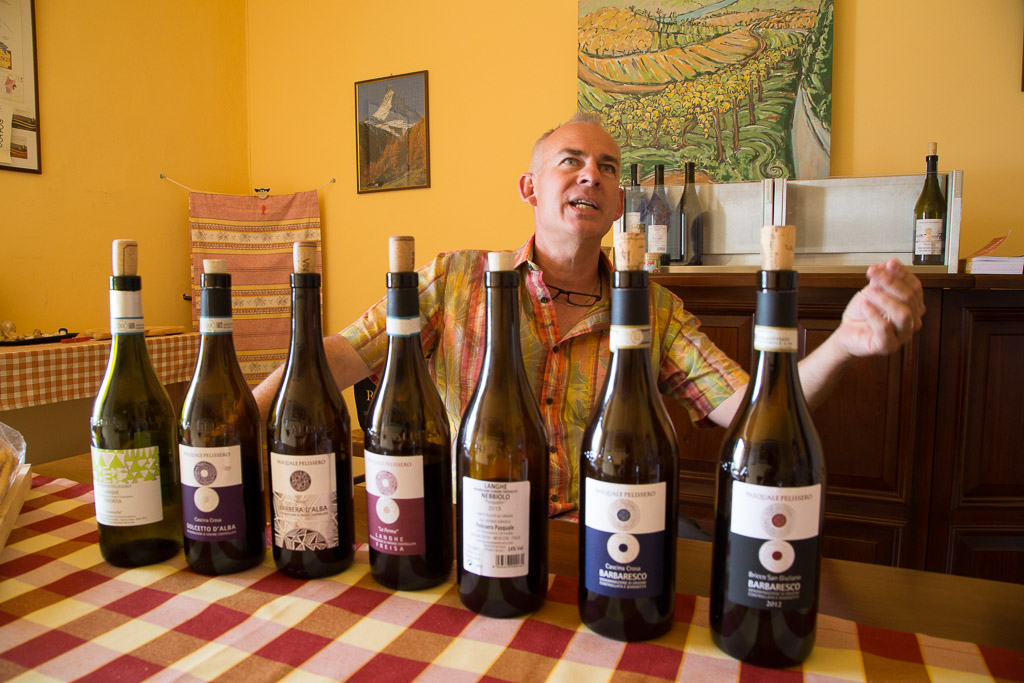
Robert explains the differences in the wine from Barbaresco to Dolcetto. Because of our Travel Langhe tour, We were able to visit this private winery, meet the winemaker and try all of her different wines.
For those that like to dig deeper into a region and learn more about its history, its vintners, and the specific grapes grown, a tour is an excellent entrée into the discovery of what makes each wine country work and thrive. In some cases, it’s the only way to get a closer look at estates, meet winemakers and taste at private cellars.
We had the good fortune of coming across Robert and Leslie from Travel Langhe Private Wine Tours. Two Americans that have been in the wine business for over a decade, Robert and Leslie run not only wine tours but cooking and photography workshops as well. Robert’s easygoing style helps you gain an overview of Piedmont and goes a long way towards helping you understand what you taste. They’re also a great resource for the region and aid clients in choosing towns, lodging and dining options via their site.
10) The People
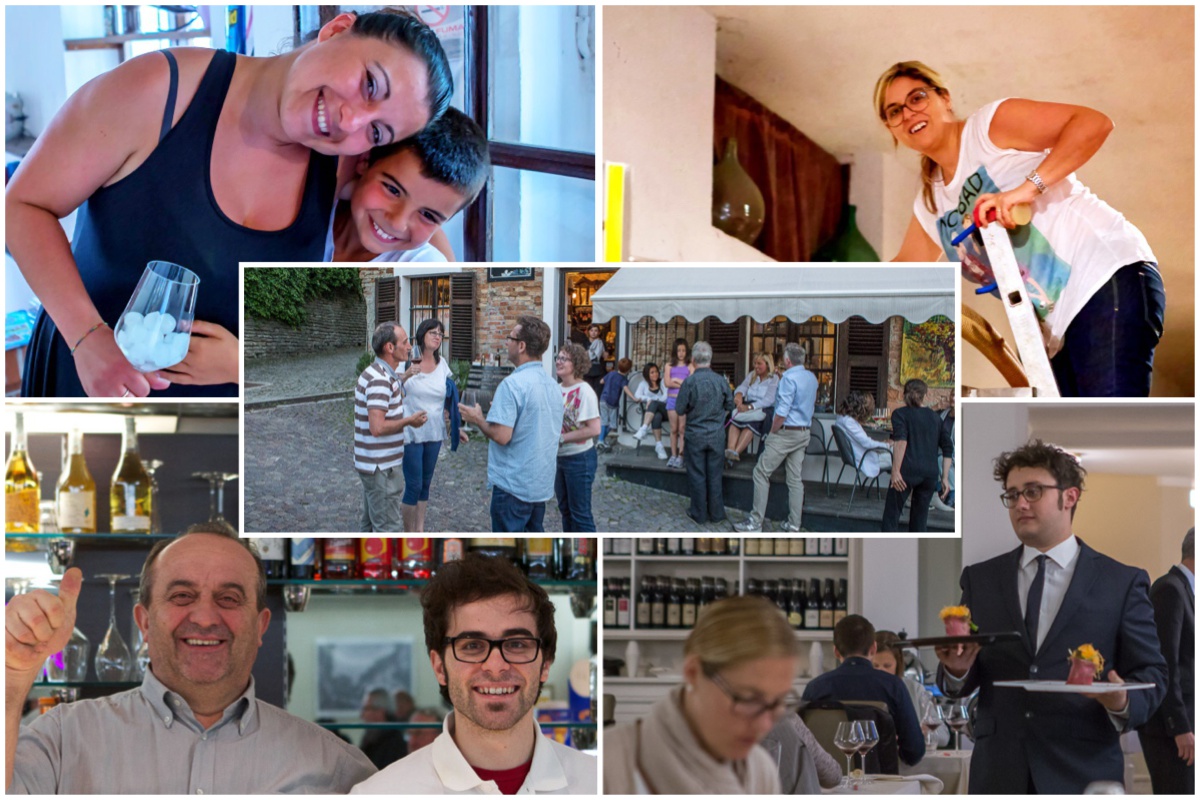
Some of the wonderful people I met while staying for a few days in Piedmont. Wine shop owners, winemakers, restaurateurs, servers and all of them warm and kind. See? Go visit! Photo credit: Robert Alexander
While the friendliness scale at any given wine region can vary, here in Piedmont the people are charming, welcoming, and if they don’t speak English they are happy to engage in a spirited game of communication charades with you. Going back through my pictures I realize that I hadn’t taken any photos of my favorite people that I met during my time there. So I asked Robert to send me some that he had taken. This totally gives me an excuse to head back to my favorite restaurant in Neive, Donna Selvatica, and relax into a spot on the patio overlooking Babaresco, wash down some truffle-covered flan di aspergi with a Nebbiolo, and plan my next photo shoot.
What’s your favorite wine country?
How to Plan a Visit to Piedmont
Eat
In Neive
Lunch or Dinner: We loved Donna Selvatica for the innovative twists on traditional food, the truffle tasting menu and the view.
Casual lunch or dinner: De Gusto Enoteca con Cucina
In Neviglie
Local’s secret: Asso di Quadri Pizzeria. You won’t find any English here, but you will find friendly service and a menu with pictures.
Sleep
In Neive
Borgo Vecchio Suites are brand new and have top-notch, friendly service, large suites, abundant breakfasts served in room, and stunning views.
Email Daniela at info[at]borgovecchioneive[dot]it or call +39 338 5813733
Do
Private Wine Tour (or cooking or photography class) Contact Robert and Leslie Alexander of Travel Langhe. Tell them I sent you!
Transport
For International flights, Milan-Malpensa (MXP) is the closest. Drive time from MXP is approximately 90 minutes.
For Domestic European flights, Turin-Caselle (TRN) is closer. Drive time from TRN is approximately 30 minutes.


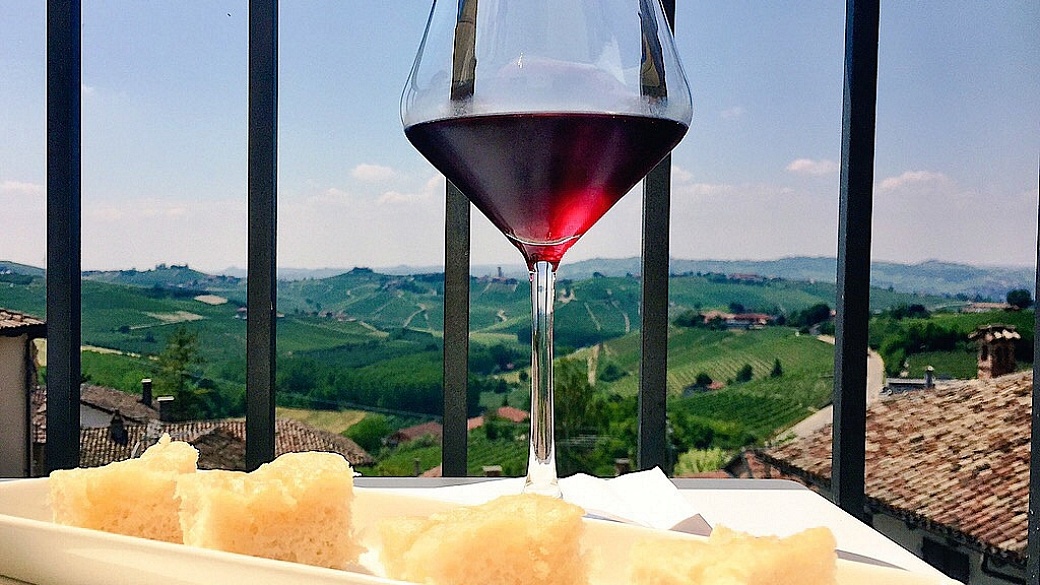

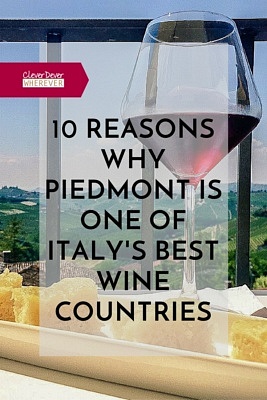
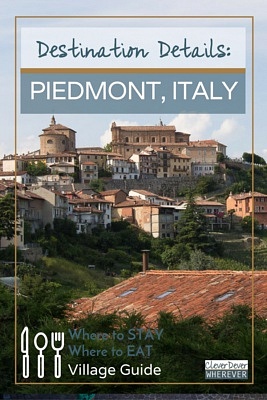

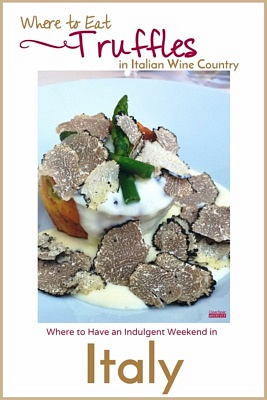
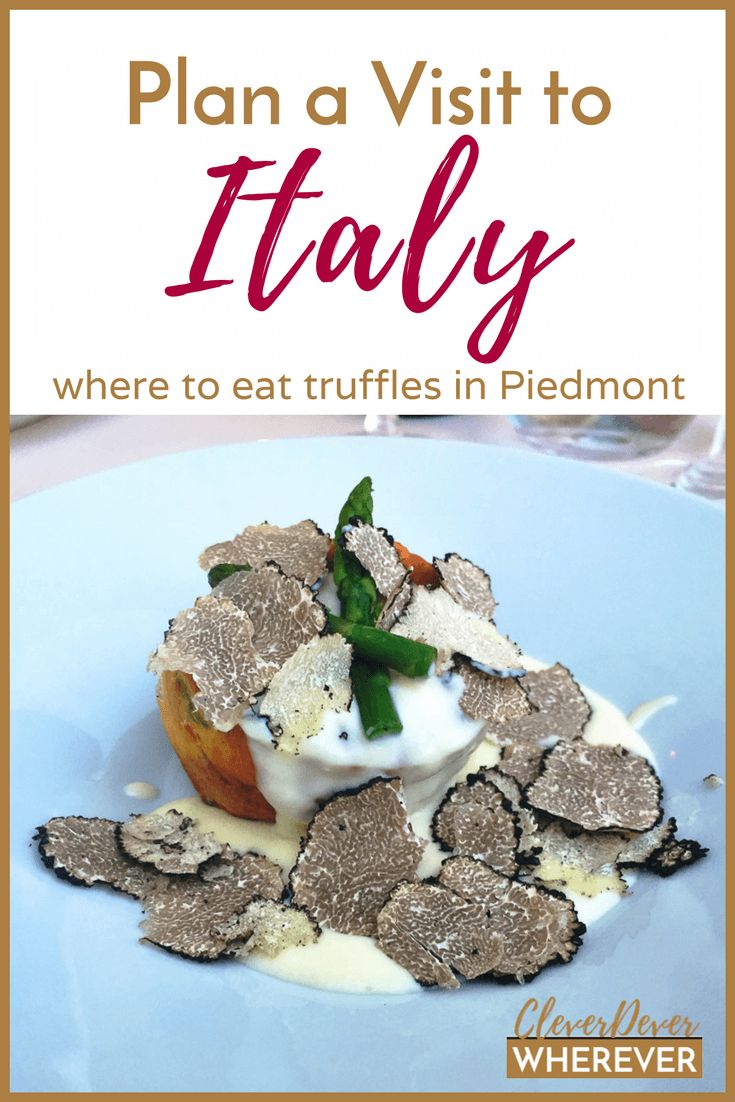
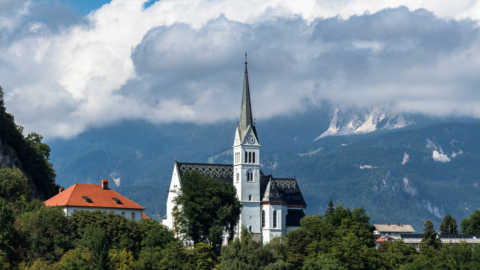

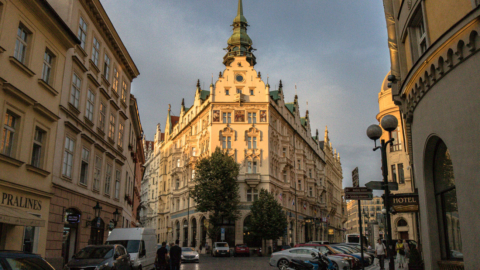
30 Comments